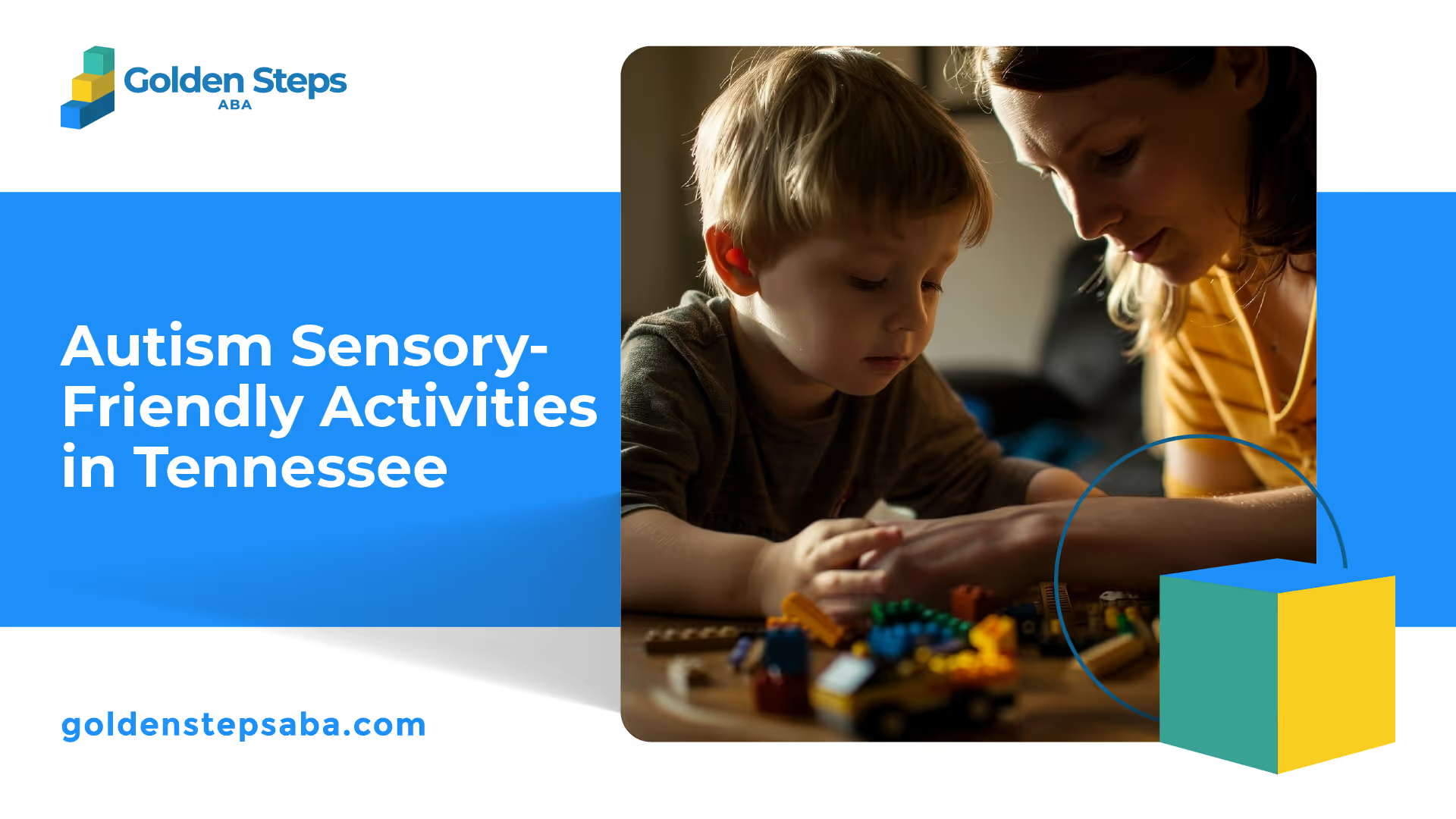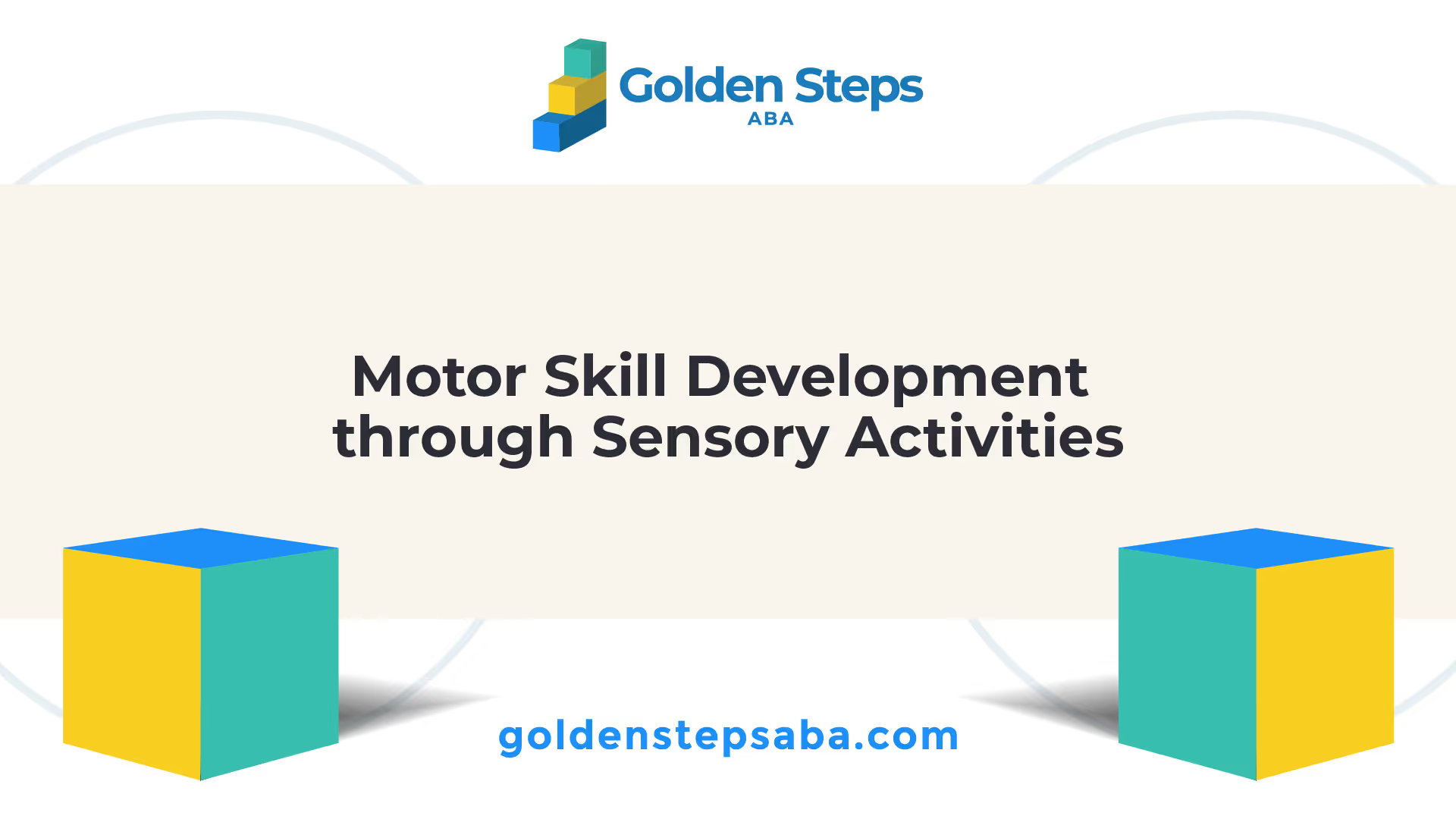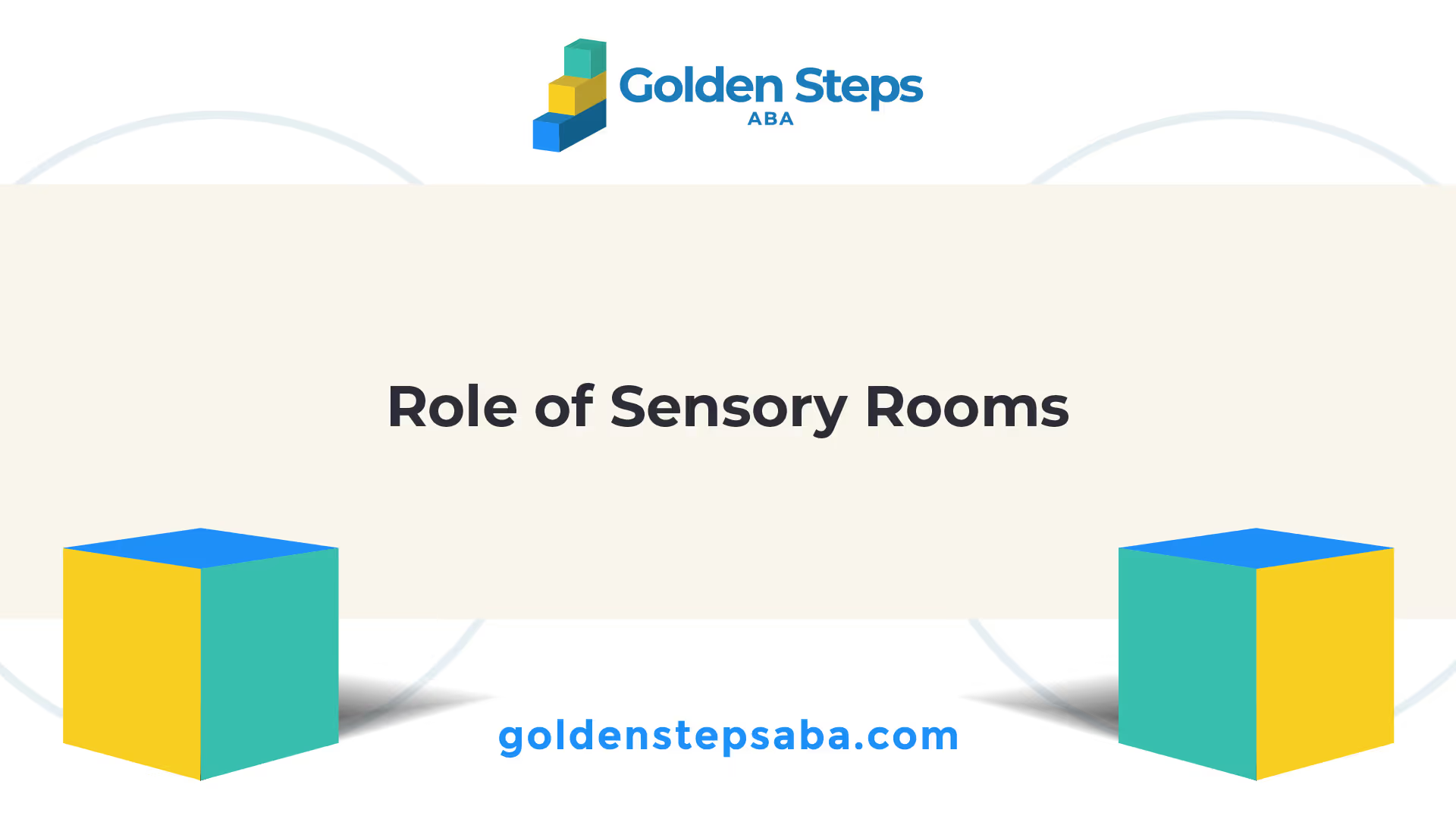Sensory Activities for Autism
Engaging in sensory activities can be immensely beneficial for individuals with autism. These activities focus on stimulating the senses, such as visual, auditory, tactile, and vestibular stimuli, to develop sensory integration skills necessary for processing and responding to sensory information effectively [1]. Let's explore the benefits of sensory activities and the importance of tailoring them to individual needs.

Benefits of Sensory Activities
Sensory activities play a crucial role in aiding and empowering individuals with autism. These activities can have a positive impact on various aspects of development, including cognitive, motor, and social skills. Some of the key benefits of sensory activities include:
- Enhancing Attention Span: Sensory activities can help individuals with autism improve their ability to concentrate and sustain attention. By engaging in activities that stimulate different senses, individuals can enhance their focus and attention span, which can have positive effects on their overall cognitive development [1].
- Promoting Cognitive Skills: Sensory activities provide opportunities for individuals with autism to explore their environment, boost creativity, imagination, and problem-solving skills. These activities also facilitate learning about relationship dynamics, social interactions, and emotional regulation. Through sensory play, individuals can develop language and social skills naturally, enabling them to communicate emotions, wants, and needs effectively [1].
Importance of Tailoring Activities
Each individual with autism has unique sensory needs and preferences. It is essential to tailor sensory activities to accommodate these specific requirements. By personalizing the sensory experience, individuals can fully engage and benefit from the activities. Some key considerations for tailoring sensory activities include:
- Sensory Preferences: Understanding an individual's sensory preferences is crucial for designing activities that resonate with them. Some individuals may have a preference for certain sensory inputs, such as visual or tactile stimuli. By incorporating preferred sensory elements, the engagement and enjoyment of the activity can be enhanced.
- Sensory Sensitivities: Individuals with autism may experience sensory sensitivities, such as hypersensitivity (over-responsiveness) or hyposensitivity (under-responsiveness) to certain stimuli. Tailoring activities to avoid triggering sensitivities or gradually desensitizing individuals to specific sensory inputs can help create a more comfortable and enjoyable experience.
- Individual Goals: It is important to consider the individual's developmental goals when planning sensory activities. Whether the focus is on improving fine motor skills, coordination, communication, or social interactions, selecting activities that align with these goals can maximize the benefits of the sensory experience.
By customizing sensory activities to meet the specific needs and preferences of individuals with autism, these activities can provide a meaningful and enjoyable experience. It is crucial to create a safe and supportive environment that encourages exploration and learning while considering the unique sensory profile of each individual. For more information on autism-related topics, you can explore our articles on autism routine and structure, autism positive reinforcement, autism meltdowns prevention, and autism developmental milestones.

Sensory Play for Cognitive Development
Engaging in sensory activities can have a profound impact on the cognitive development of individuals with autism. These activities focus on stimulating the senses, enhancing attention span, and promoting cognitive skills. Let's explore how sensory play can benefit cognitive development in individuals on the autism spectrum.
Enhancing Attention Span
Sensory activities play a crucial role in enhancing attention span, concentration, and focus in individuals with autism. By providing sensory input through various stimuli, these activities capture and maintain the individual's attention, allowing them to stay engaged for longer periods of time. This increased attention span can have a positive impact on learning and overall cognitive development.
Promoting Cognitive Skills
Sensory activities aid in developing sensory integration skills necessary for processing and responding to sensory stimuli effectively. By focusing on visual, auditory, tactile, and vestibular stimuli, individuals with autism can improve their ability to integrate and interpret sensory information. This, in turn, promotes cognitive skills such as problem-solving, memory, decision-making, and sensory discrimination.
Research has shown that sensory integration interventions can lead to positive changes in goal attainment and a reduction in autistic mannerisms in children with Autism Spectrum Disorder (ASD) [2]. Preliminary studies have also highlighted the effects of sensory integration therapy in reducing self-stimulating behaviors and increasing functional behaviors like social interaction and play in children with ASD or Pervasive Developmental Disorder (PDD) [2].
By incorporating sensory play into daily routines and structured activities, individuals with autism can benefit from improved attention span and the development of essential cognitive skills. These activities can be tailored to the specific sensory needs and preferences of each individual, providing a personalized and effective approach to cognitive development.
To further explore the benefits of sensory activities, continue reading our article on autism sensory-friendly activities. Additionally, you may find helpful information on topics such as autism routine and structure, autism positive reinforcement, and autism meltdowns prevention to support individuals with autism in their daily lives.

Motor Skill Development through Sensory Activities
Sensory activities play a crucial role in aiding and empowering individuals with autism, focusing on developing motor skills and sensory integration. By engaging in these activities, individuals with autism can improve their coordination, balance, and muscle development, making everyday tasks more manageable [1].
Improving Coordination
One of the benefits of sensory activities for individuals with autism is the improvement of coordination skills. Sensory activities provide opportunities to engage the senses, which in turn helps individuals develop a better sense of body awareness and control. These activities involve movements that require coordination, such as balancing on unstable surfaces or navigating obstacle courses.
Through these activities, individuals with autism can enhance their proprioceptive and vestibular systems, which are responsible for sensing body position and balance. This improvement in coordination can have a positive impact on daily activities such as walking, running, and engaging in sports.
Enhancing Muscle Development
Engaging in sensory activities also promotes muscle development in individuals with autism. These activities often involve movements that require the use of different muscle groups. For example, climbing on playground equipment, jumping on trampolines, or engaging in yoga poses can help strengthen muscles and improve overall muscle tone.
By participating in sensory activities, individuals with autism can enhance their gross motor skills, which involve the movement and coordination of large muscle groups. This improvement in muscle development can have a positive impact on various aspects of daily life, such as posture, balance, and the ability to perform physical tasks with greater ease.
It's important to note that sensory activities should be tailored to the individual's abilities and preferences. Each person with autism may have different sensory sensitivities and preferences, so it's crucial to create a supportive and comfortable environment that allows for individualized engagement in sensory activities. For more information on creating a sensory-friendly environment, refer to the section on Creating a Sensory-Friendly Environment.
By incorporating sensory activities into daily routines and providing opportunities for individuals with autism to engage their senses, motor skills can be developed, leading to improved coordination and muscle development. These activities not only benefit physical abilities but also contribute to overall development and well-being.
Understanding Sensory Sensitivities
In order to create a sensory-friendly environment and cater to the needs of individuals with autism, it is essential to understand sensory sensitivities. Autism is often associated with sensory processing difficulties, which can manifest as either hypersensitivity or hyposensitivity to sensory stimuli.
Hypersensitivity and Hyposensitivity
Hypersensitivity refers to an increased sensitivity to sensory input, where individuals with autism may experience sensations at higher intensities than neurotypical individuals. For example, approximately 90% of people with autism have hypersensitivity to auditory input, making them more sensitive to sounds. This means that sounds that may be tolerable or even unnoticed by others can be overwhelming for individuals with autism.
On the other hand, hyposensitivity refers to a reduced sensitivity to sensory input. Children with hyposensitivity to tactile and proprioceptive input may have a weak grasp and may crave crashing into things [3]. This means that they may require more intense or repetitive sensory input to register sensations.

Impact on Daily Life
Sensory sensitivities can have a significant impact on the daily lives of individuals with autism. For example, hypersensitivity to visual input may cause distress in visually cluttered environments or classrooms with bright colors and patterns [3]. This can make it difficult for individuals with autism to focus, concentrate, or feel comfortable in certain settings.
Similarly, hypersensitivity to auditory input can make everyday sounds, such as sirens or loud voices, overwhelming for individuals with autism. This can lead to anxiety, stress, and difficulty processing information in noisy environments.
Sensory sensitivities can also impact motor skills and coordination. Difficulty with balance and spatial awareness is common in individuals with autism, making it challenging for them to understand their position in relation to the physical world around them [4]. This can affect their ability to navigate their surroundings safely and participate in activities that require coordination.
It's important to note that sensory sensitivities are unique to each individual with autism. Some individuals may have multiple sensory sensitivities, while others may have only a few. Understanding these sensitivities allows caregivers, educators, and the community to create an inclusive and supportive environment for individuals with autism.
To learn more about creating a sensory-friendly environment and supporting individuals with autism, explore our articles on autism routine and structure, autism positive reinforcement, autism meltdowns prevention, and autism developmental milestones.
Creating a Sensory-Friendly Environment
To provide a supportive and inclusive environment for individuals with autism, creating a sensory-friendly space is essential. Consideration of various factors can greatly enhance the comfort and well-being of individuals with autism.
Factors to Consider
When designing a sensory-friendly environment, it's important to take into account several factors that can significantly impact individuals with autism. Here are some key considerations:
- Lighting: Lighting plays a crucial role in creating an autism-friendly environment. For some individuals, fluorescent lights can be distracting and overwhelming. It's advisable to use natural lighting whenever possible or opt for soft, dimmable lighting. This can help create a calm and soothing atmosphere.
- Color: Different colors can have varying effects on individuals with autism. While some colors may be stimulating, others can have a calming effect. It's important to be mindful of the color palette when designing a sensory-friendly environment. Neutral and muted colors are generally recommended to create a serene and peaceful ambiance.
- Auditory Sensitivity: Many individuals with autism have heightened auditory sensitivity. They may be more sensitive to loud noises or certain frequencies. Minimizing background noise and providing options for sound control, such as noise-cancelling headphones or quiet spaces, can help create a more comfortable environment.
- Tactile Sensitivity: Autistic individuals may have specific touch preferences. Some may be averse to certain textures or require extra pressure to feel calm and safe. Providing a variety of tactile experiences, such as textured surfaces or objects, can cater to different sensory needs. Weighted blankets or deep pressure activities can also be beneficial for those needing additional sensory input.
- Smell: Some individuals with autism may have heightened sensitivity to smells. Certain scents can be overwhelming and cause discomfort. It's important to be mindful of the scents present in the environment and avoid any strong or unpleasant odors. Maintaining a clean and odor-neutral space can contribute to a sensory-friendly atmosphere.
- Balance and Spatial Awareness: Autistic individuals may experience difficulties with balance and spatial awareness. Providing opportunities for activities that promote balance, coordination, and spatial understanding, such as rocking chairs, swings, or balance boards, can help individuals gain a sense of self and improve their overall well-being.
By considering these factors, it is possible to create an environment that is conducive to the needs of individuals with autism. However, it's important to remember that each person's sensory preferences and sensitivities may vary. Flexibility and open communication with individuals and their caregivers are key to tailoring the environment to meet their specific needs.

Role of Sensory Rooms
Sensory rooms are dedicated spaces designed to provide a controlled sensory environment for individuals with autism. These rooms are equipped with a range of sensory stimuli, including visual, auditory, tactile, and proprioceptive elements, to engage and soothe the senses. Sensory rooms offer a safe and therapeutic space where individuals can explore and engage with various sensory experiences.
In a sensory room, individuals can engage in activities that promote sensory integration, relaxation, and emotional regulation. These may include sensory swings, fiber optic lights, bubble tubes, tactile walls, and calming music. The goal is to create a calming and enjoyable experience that can help individuals with autism self-regulate and manage sensory sensitivities.
Sensory rooms can be found in various settings, such as schools, therapy centers, and community centers. They serve as valuable resources for individuals with autism, providing a dedicated space where they can engage in sensory activities tailored to their specific needs.
To explore more resources and support for individuals with autism, including sensory-friendly initiatives and community support networks, refer to our article on support and resources for autism.
Support and Resources for Autism
Individuals with autism require support and access to resources that cater to their unique needs. Sensory-friendly initiatives and community support networks play a crucial role in providing assistance and creating an inclusive environment for individuals with autism.
Sensory-Friendly Initiatives
Sensory-friendly initiatives aim to accommodate individuals with sensory sensitivities, including those with autism. One notable example is the sensory-friendly films offered by AMC Entertainment in partnership with the Autism Society. During these screenings, lights and sound levels are adjusted to create a comfortable and supportive movie experience for children affected by autism [5].
These initiatives provide individuals with autism and their families the opportunity to participate in activities that may otherwise be overwhelming. By creating an environment that considers their sensory needs, these initiatives foster inclusivity and promote a sense of belonging.
Community Support Networks
Support networks and initiatives play a vital role in providing resources and guidance to individuals with autism and their families. Platforms like MyAutismTeam offer a supportive community where individuals can connect, share experiences, and find valuable information and support. These networks provide a sense of belonging and understanding, helping individuals with autism and their families navigate the challenges they may face [5].
Initiatives such as "Sesame Street and Autism: See Amazing in All Children" promote acceptance and inclusion by raising awareness about autism. Through educational materials and resources, these initiatives foster understanding and create a more inclusive society for individuals with autism.
By accessing community support networks and participating in sensory-friendly initiatives, individuals with autism can find the support they need to thrive. These resources not only provide valuable guidance but also offer a sense of community and understanding.
References
- https://www.ncbi.nlm.nih.gov/pmc/articles/PMC3708964/
- https://www.abtaba.com/blog/autism-sensory-friendly-activities
- https://autismspectrumnews.org/sensory-friendly-tools-and-resources-for-autism-caregivers/
- https://livingautism.com/create-autism-friendly-environment/
- https://www.abtaba.com/blog/free-sensory-resources-and-links



